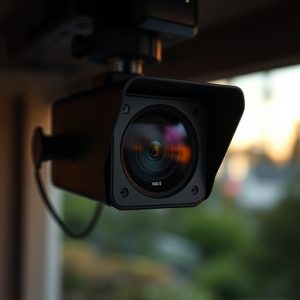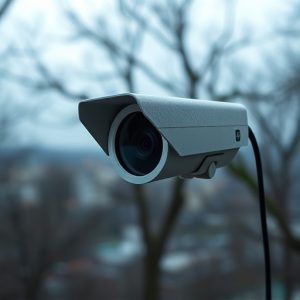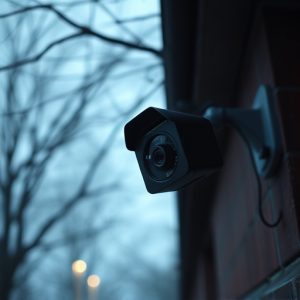Wireless Hidden Cameras for Apartments: Uncovering Common Secret Surveillance Spots
Wireless hidden cameras in apartments create a tension between landlords' security needs and te…….
Wireless hidden cameras in apartments create a tension between landlords' security needs and tenants' privacy rights. These devices, disguised as everyday items, transmit video remotely via the internet, but their use is governed by legal and ethical guidelines. Landlords must inform tenants about camera placement, especially in common areas or where privacy is expected, to avoid contract breaches and civil liberties violations. Tenants can protect themselves by understanding camera capabilities and their rights, while landlords should prioritize transparency and proportionality in surveillance practices to maintain a respectful living environment. Despite concerns, these cameras offer enhanced security with advanced features like motion detection, provided they are installed and used legally and responsibly.
In today’s digital era, renting an apartment comes with both comfort and concerns. One growing concern is the potential use of wireless hidden cameras, raising questions about tenant privacy and legal boundaries. This article delves into the intricacies of understanding and navigating this issue. We explore wireless hidden cameras for apartments, their legal implications, common surveillance spots in rental properties, and weigh the pros and cons of such installations. Additionally, we offer alternative measures to enhance apartment security without compromising privacy.
- Understanding Wireless Hidden Cameras for Apartments
- Legal Considerations: Tenant Rights and Landlord Obligations
- Common Secret Surveillance Spots in Rental Properties
- Pros and Cons of Installing Hidden Cameras in Rentals
- Alternative Measures to Enhance Apartment Security
Understanding Wireless Hidden Cameras for Apartments
Wireless hidden cameras for apartments have become a growing concern for tenants and homeowners alike, as technology advances and privacy becomes an increasingly valuable commodity. These sophisticated devices, often disguised as everyday objects like smoke detectors, power outlets, or even paintings, transmit video signals wirelessly to a receiver, allowing remote viewing and recording from anywhere with an internet connection. While some landlords argue that they’re essential for property security and tenant verification, others see them as an invasion of privacy.
Tenants should be aware of the legal and ethical implications surrounding the use of wireless hidden cameras in rental properties. In many jurisdictions, landlords need consent or a specific legal reason to install such devices, and the placement of cameras must adhere to privacy laws. Understanding how these cameras work, where they might be hidden, and what rights tenants have can help foster open communication with landlords and ensure that privacy is respected throughout the rental process.
Legal Considerations: Tenant Rights and Landlord Obligations
When considering wireless hidden cameras for apartments, it’s crucial to understand the legal landscape surrounding tenant rights and landlord obligations. In many jurisdictions, landlords are required to inform tenants about the presence of surveillance systems, especially in common areas or where they might reasonably expect privacy. Failure to do so can result in significant legal repercussions, including potential breaches of contract and even violations of civil liberties laws.
Tenants have rights that must be respected; these include protections against unreasonable searches and seizures. Installing hidden cameras without proper notice or consent may infringe upon these rights, leading to disputes and costly litigation. Landlords should focus on transparency and proportionality when employing surveillance measures, ensuring they meet the legal standards and respect the privacy expectations of their tenants.
Common Secret Surveillance Spots in Rental Properties
In today’s digital era, wireless hidden cameras for apartments have become a common feature in rental properties. Landlords often install these devices to ensure property security and maintain tenant behavior standards. Some of the most frequent secret surveillance spots include corners near entryways, inside utility closets, and above key points like windows or doors. These strategic locations allow for unobtrusive monitoring while maintaining the aesthetic appeal of the space.
Tenants should be made aware of these installations through clear, written notices, as hidden cameras in rental properties raise privacy concerns. Even with legitimate purposes, their presence can create an uncomfortable living environment. Therefore, open communication between landlords and tenants is crucial to addressing these issues and fostering a safe, respectful coexistence.
Pros and Cons of Installing Hidden Cameras in Rentals
Installing wireless hidden cameras in rental properties has become a trend among landlords aiming to maintain security and tenant accountability. These devices offer remote monitoring capabilities, allowing property owners to keep an eye on their investments even when they’re away. The use of wireless hidden cameras for apartments can be beneficial in several ways. It provides deterrence against potential damage or theft, enabling quick response to any issues. Additionally, these cameras can facilitate easier screening of prospective tenants and offer a level of protection for both the landlord and current tenants.
However, there are also significant drawbacks to consider. Privacy concerns top the list, as tenants have a reasonable expectation of privacy in their homes. Unbeknownst surveillance may violate tenant rights, leading to mistrust and legal complications. Furthermore, hidden cameras could be seen as an invasion of personal space, causing discomfort and potentially driving tenants away. There’s also the risk of the footage being accessed by unauthorized individuals if security measures aren’t robust enough. Balancing safety and privacy is crucial for landlords, and it’s essential to ensure any surveillance practices adhere to local tenancy laws regarding hidden cameras in apartments.
Alternative Measures to Enhance Apartment Security
While hidden cameras in rental properties might be a controversial topic, there are alternative measures landlords and tenants can explore to enhance apartment security. Wireless hidden cameras for apartments offer a modern solution, providing peace of mind without compromising privacy. These non-intrusive devices can be discreetly installed in various locations, such as corners or behind furniture, allowing for surveillance without visible equipment.
By utilizing wireless technology, these cameras provide remote access and real-time monitoring capabilities. This means tenants and landlords alike can keep an eye on the property, ensuring the safety of belongings and personal spaces. Moreover, many modern models offer motion detection alerts, enabling quick response to potential issues or unauthorized entries.
While the use of wireless hidden cameras in apartments may seem like a solution for enhancing security, it’s crucial to balance this with tenant rights and legal obligations. Understanding the potential benefits and drawbacks, as well as exploring alternative measures like improved lighting or secure entry systems, can help landlords maintain a safe environment without infringing upon tenants’ privacy. Remember that open communication and transparency are key to fostering a harmonious rental relationship.


